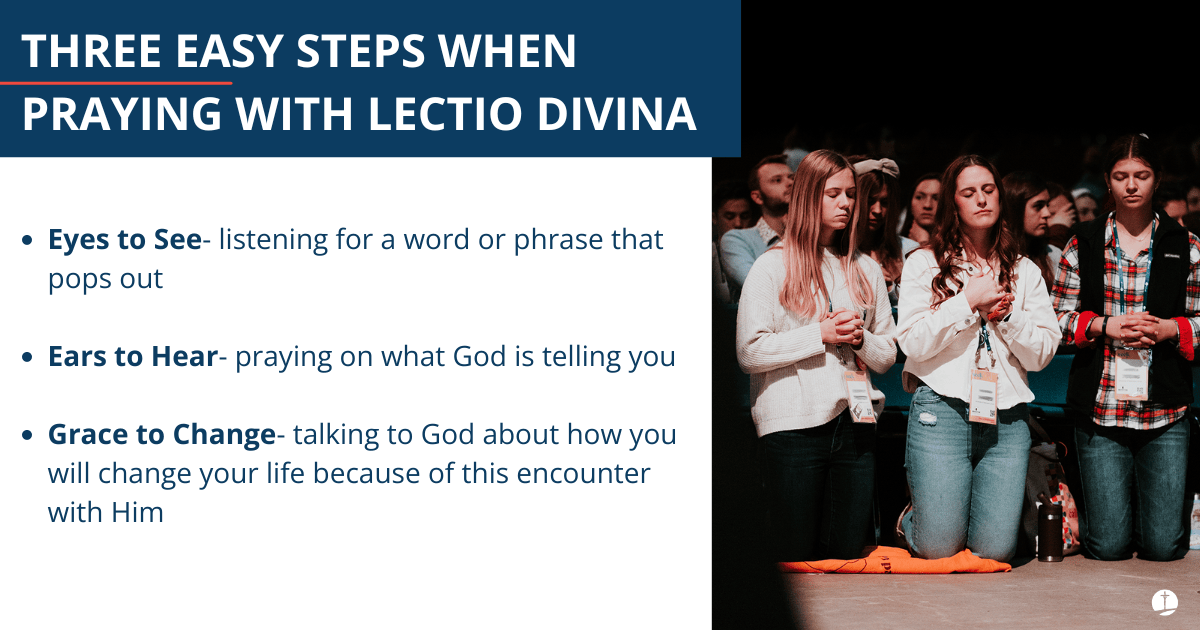Lectio Divina is a Catholic practice of using Scripture to pray—it’s like having a conversation with God through His words. You may be asking, “What is Lectio Divina?” The name means “divine reading,” and it’s all about letting the Bible speak to you on a deeper level. There are three easy steps to praying Lectio Divina, which we’ve outlined for you below.
Lectio Divina doesn’t treat Scripture as mere texts for study, but as the Living Word. Therefore, it’s an amazing way to infuse your spiritual life with a sense of personal connection and vitality, fostering a deeper connection with God through His Word.
Pope Benedict XVI spoke about Lectio Divina specifically, recommending it to Catholics as a form of powerful prayer and connection, saying:
“I would like in particular to recall and recommend the ancient tradition of lectio divina: the diligent reading of Sacred Scripture accompanied by prayer brings about that intimate dialogue in which the person reading hears God who is speaking, and in praying, responds to him with trusting openness of heart (cf. Dei Verbum, n. 25). If it is effectively promoted, this practice will bring to the Church—I am convinced of it—a new spiritual springtime.”
How Do You Pray Lectio Divina?
Below, we have a three-step Lectio Divina guide to walk you through the prayer and, eventually, others through it.
Lectio Divina consists of:
- A Quick Prayer
- A Careful Reading of Scripture
- Silence and Prayer with God
The Lectio Divina prayer steps are:
- Eyes to See — listening for a word or phrase that pops out.
- Ears to Hear — praying on what God is telling you.
- Grace to Change — talking to God about how you will change your life because of this encounter with Him.
First, we always advise you to take “Step 0” and start by deciding what you’re going to pray with. A go-to suggestion is the day’s Gospel reading. As well, it’s a good idea to open in prayer and ask God for the grace to hear Him, stay focused and open your heart in this practice.
Here’s an example of a preparatory prayer to use:
Father,
Thank you for the gift of this day. Thank you for the gift of faith and the grace you’ve given me to respond to you. Thank you for revealing yourself in Sacred Scripture. Thank you for revealing yourself in your Son. Help me to stay focused in this time of prayer. Please grant me the grace to hear your voice and respond. Amen.
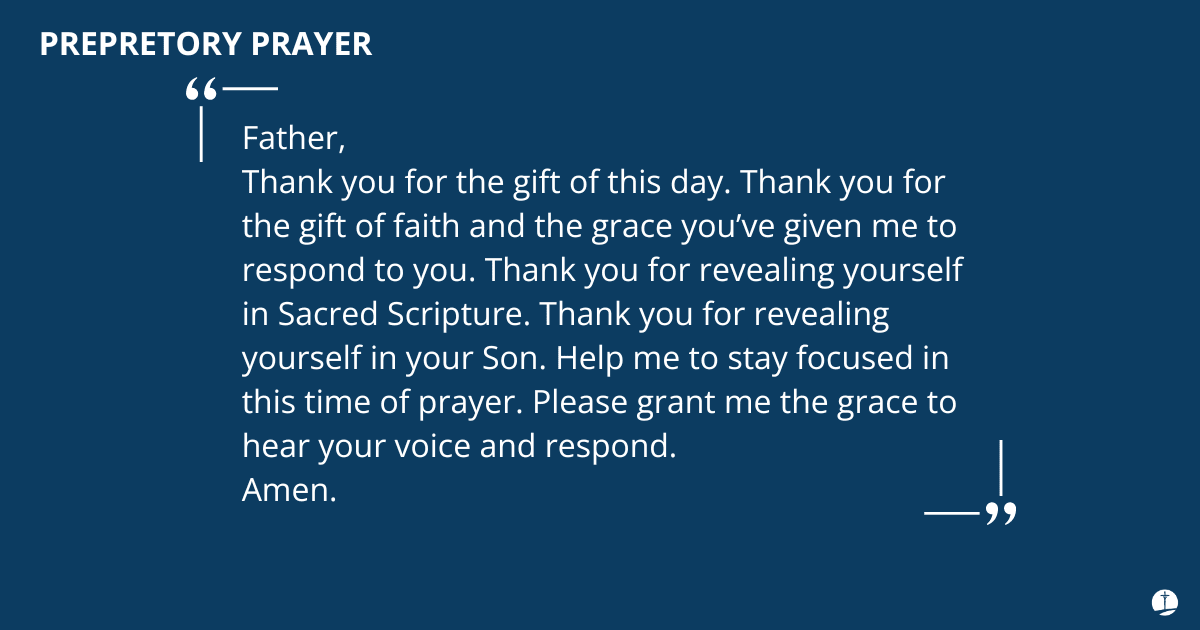
Step 1: Eyes to See
Start with your prayer for this first step; here’s an example of what this can sound like:
Father,
Your Word is alive and active, sharper than any two-edged sword, piercing between joints and marrow. (Hebrews 4:12) Pierce my heart today with your Word. Allow me to be attentive to how you are speaking to me today through this passage. As I read this passage for the first time, may I be open to hearing a word or phrase you wish to show me. Amen.
Next, you’ll read the passage:
Be on the lookout for a word or phrase that jumps out at you.
Ask yourself: What is God highlighting for you today? What from this passage strikes you?
Feel free to read it once or twice more if needed. Then, take some time in silence to sit with the word or phrase God has shown you. Mull it over, and allow yourself to think deeply about what is being said.
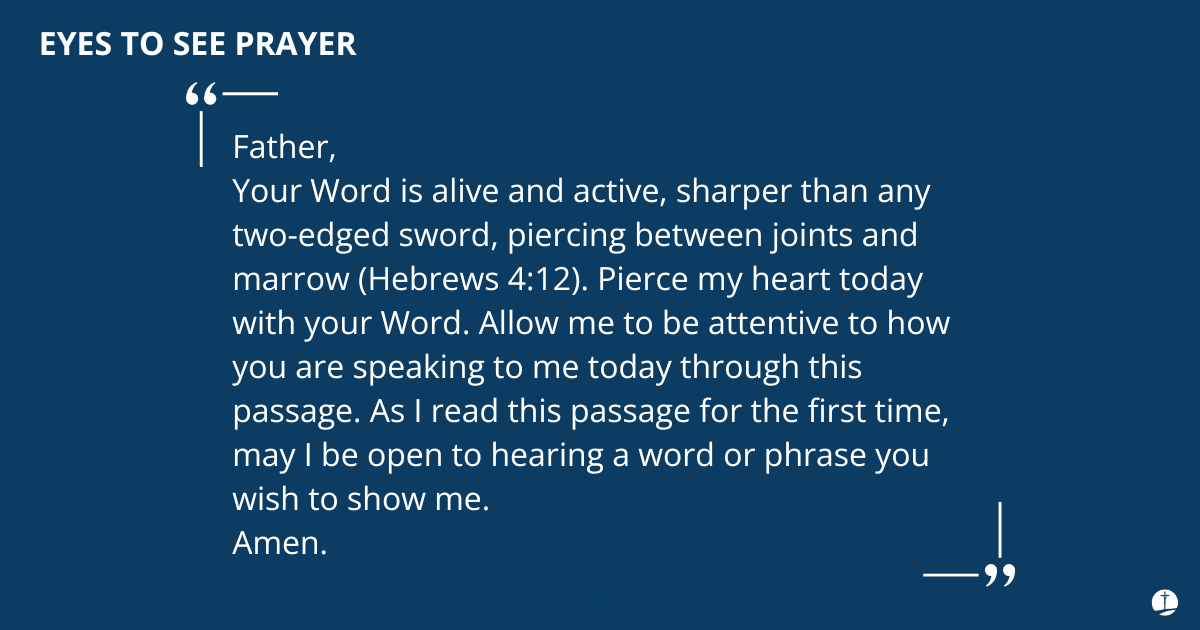
Step 2: Ears to Hear
Begin again with a quick prayer, an example for, “Ears to Hear,” goes like this:
Father,
Your Word is living and active (Hebrews 4:12) that it goes forth from your mouth and does not return to you empty, but accomplishes that which you intend (Isaiah 55:11). Send your Word into my heart now. Give me the ears to hear your voice. As I reread this passage, may I hear what you wish to tell me today. Amen.
Carefully read the passage a second time:
Be on the lookout for what God is telling you. This could build on top of the word or phrase from the first step.
Then, talk with God in prayer, “I find myself going back to this word; what are you trying to show me by this?” “You’re telling me (fill in with the passage or word) through this passage, help me understand why.”
Having a small conversation about what He’s telling you allows you to go deeper into the Scripture. Be silent and allow the Lord to speak.

Step 3: Grace to Change
Any encounter with God should change our lives. Praying with Scripture is no different. In this step, we ask God to show us what to change. It could be something big or small, something we need to start (or stop) doing or a change in perspective.
Pray a quick prayer for this third step, use this example:
Father,
You’ve told us that in the beginning, the Word was God, and the Word was with God, and the Word was made flesh and dwelt among us (John 1:1, 14). May my encounter with you through your Word be as strong as if Jesus were here in the room speaking with me face to face. Allow me to receive your call to change in my life. Grant me the grace to know how to change my life and the strength to do it. Amen.
Next, you’ll carefully read the passage for a third time:
During this time, pause to think, reflect, and pray on the change you recognize from this passage. Ask yourself: What is God inviting you to change? Where are you being asked to take a step closer to Him?
Take some time in silence, and allow the Lord to speak. Take it in, and respond to Him. Have a conversation. Ask Him questions about it: What will this change mean for me?
Give God your “yes,” and ask him for the grace to stick to your new resolution.
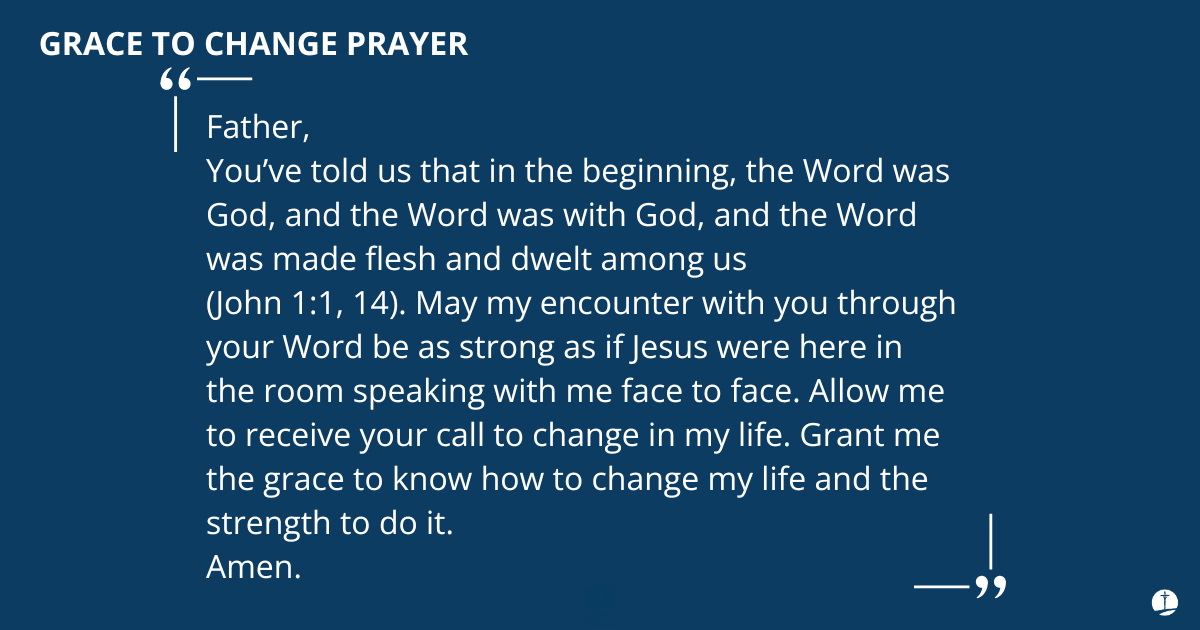
Step 4: Contemplatio — Rest
Finally, move beyond words.
Sit quietly in God’s presence and rest with Him. This step is not about doing or saying anything—it is about being with God, allowing His Word to dwell in your heart.
Remain here for a few moments, receiving whatever peace or insight God offers.
Conclusion:
Follow this example:
Father,
Thank you for revealing yourself to me in prayer today. Thank you for touching my heart, speaking to me, and showing me how to change my life. May any and all seeds you have sown in my heart today, by your grace, grow to maturity and bear fruit for you that will last. I ask all these things in Jesus’ name and by his blood. Amen.
After closing, take a few extra minutes to reflect on how your prayer went. Consider the environment, your experience, your prayers, your posture and any distractions. Allow this to help you the next time you pray Lectio Divina, replicate what was helpful and adjust what wasn’t.
Ultimately, this practice of praying Lectio Divina with Scripture passages can significantly influence how you communicate with God. You can share and teach these steps to others and even engage within a group or Bible study to read God’s Word together and hear what He has to say.
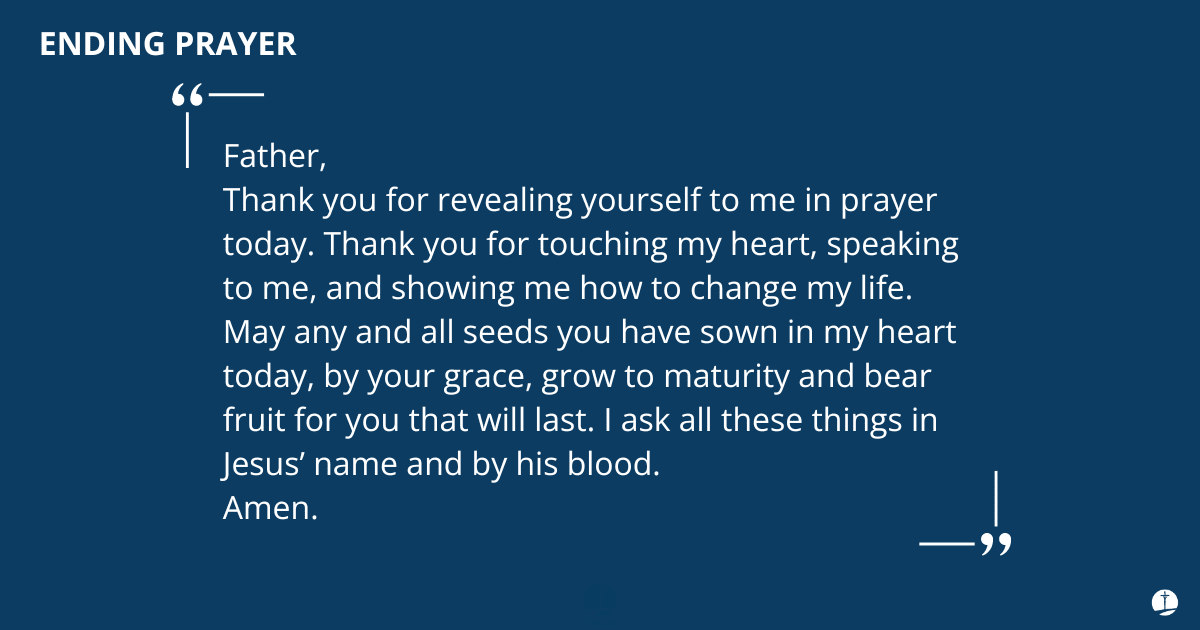
Additional Resources
For a more in-depth teaching on Lectio Divina, watch Fr. Scott Traynor’s session from FOCUS Summer Training. For other resources on prayer, check out Jeff Cavin’s talk from SEEK on praying and hearing God’s voice in Scripture.
Check out our other guides to: the Rosary, Consecration to St. Joseph, and intercessory prayer.
Join the entire FOCUS community every month online in praying the rosary. Sign up via this link.
